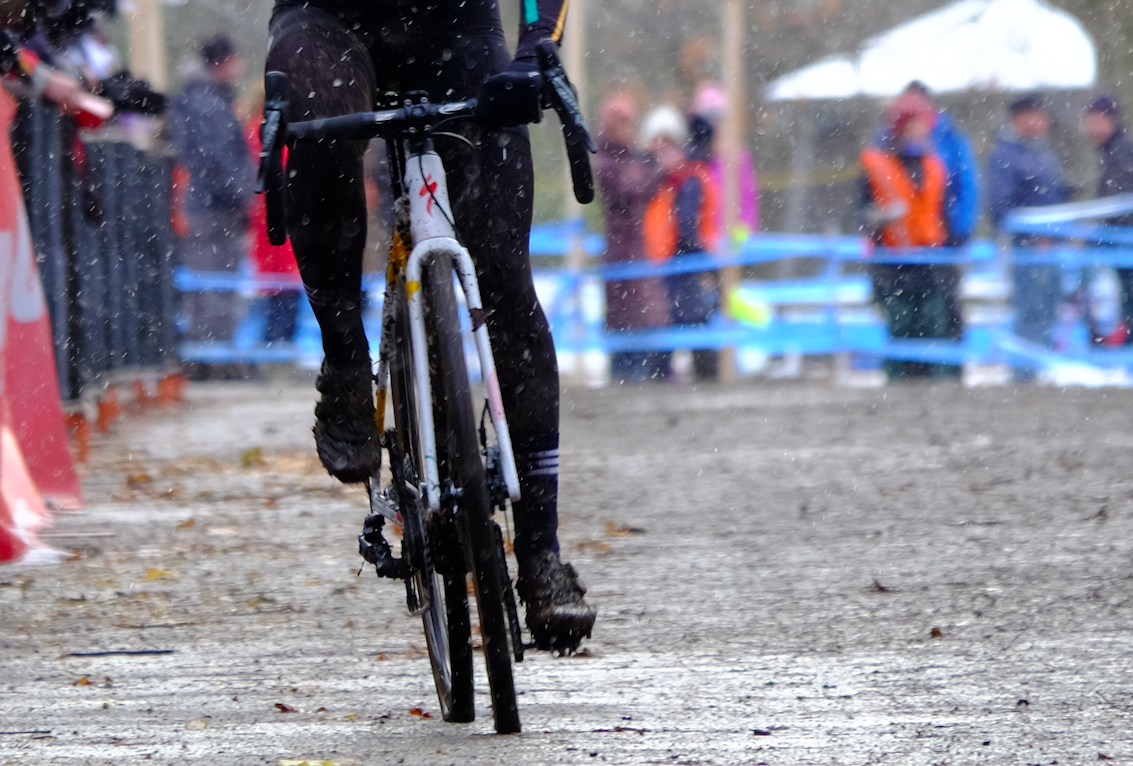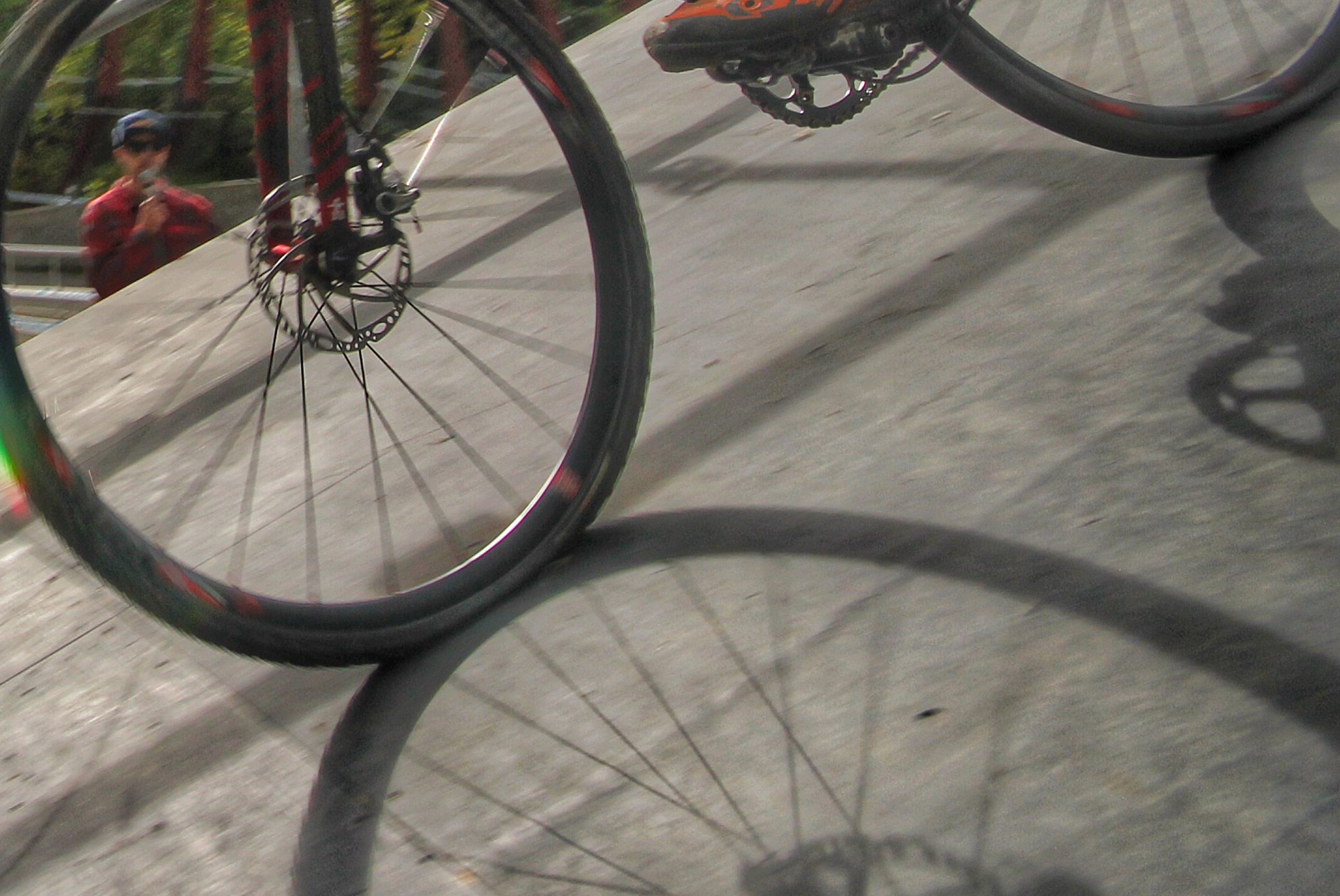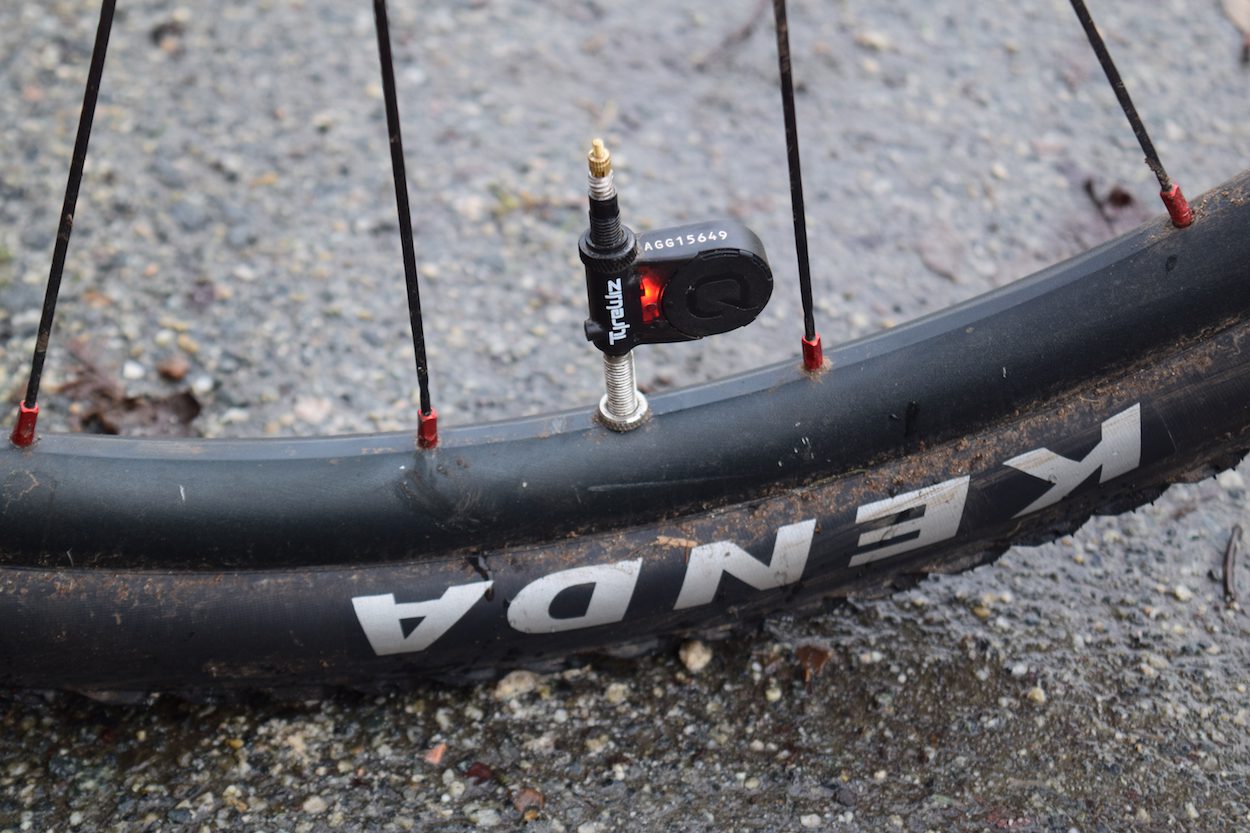Tire pressure is one of the most important parts of setting your bike up. It’s also one of the most commonly mis-understood.
Tire pressure is also one of the most temporary fixes. Alongside keeping your drivetrain clean, making sure you have proper p.s.i. in your tires before each ride is one of those easy tasks that often gets neglected, but has a big impact on your ride quality. Reach, seat height, and other fit measures will stay consistent day to day, but set up your tires right one day and they still have to be checked again before your next ride.

Why is tire pressure so important?
To start, your tires are the only part of the bike actually making contact with the ground while you’re riding. Ideally, until it all goes south and you end up OTB. But, perfecting tire pressure is one surefire way you can prevent that happening.
P.s.i. can be especially potent when you’re dealing with larger tire volumes at lower pressures. Cyclocross, gravel riding, and mountain biking – more so over the colder winter months. They all mix low pressures for traction with a riding environment high in risk for potential flats.

Stop bouncing and feel the benefits
The reward for nailing the ideal air volume is increased traction and better rolling resistance. If you run your tires soft enough they will conform to the ground below you instead of sliding across slippery or bumpy surfaces. Letting your tire take the shape of a small root helps you roll on instead of sliding off the trail. With lower pressures you get more of your tread making contact with the ground. This gives you more grip in greasy cyclocross corners, slippery gravel, slick rock rolls and slippery roots.
The sweet spot for tire pressure can be narrow or, with constantly changing surfaces like gravel riding, the optimal amount of air keep you afloat can change over the course of a ride. Smooth pavement rewards higher pressures, while higher volume 38 – 45c gravel tires provide their biggest benefit when they’re running soft and absorbing road chatter instead of passing it on through the handlebars.
When you run your tires too hard, you’ll bounce or glance off obstacles instead of gripping on them. Even the fanciest boutique tire can be rendered useless by over inflation. The supple silk casing on your cross tubular or super sticky mountain bike tread don’t do much if too much air won’t let them move enough to touch the ground.

The Risk
Of course, the other side of improved grip is the increased potential for flat tires.
The lower pressure you run, the more grip you have – to a point. But if you run too soft, you increase the risk of pinch flats, cut sidewalls, and, on tubeless setups, burped tires.
While not catastrophic, stopping a ride or sacrificing a race you’ve trained hard for because your tire collapsed under too little pressure is no fun. This makes measuring accurate tire pressure before you ride an important part of getting the most out of your tires, and your entire bike.
I know I’ve been guilty of erring on the side of over-inflating tires when I don’t trust my floor pump’s gauge to be accurate. And I’ve definitely over inflated on the trail after tubeless sealants helped stop a small puncture. With a hand pump, pressure is hard to measure and my desire to avoid a second flat usually outweighs improved tire performance.
While caution is good, being over-cautions will take away from the performance of the tire. Corners are fun, but they’re more fun when you can hold traction.

Stopping the sneaky slow leak
Hitting that just-right pressure prevents flats mid-race and prevents mid-ride tube changes. But a slow leak can potentially cause more of a problem than a sudden loss of support.
Sneaky slow leaks aren’t always easy to detect but, if they go on to long, can cause more than flat tires. If you don’t notice that you’ve got less cushion, you can end up smashing rims or slicing too-soft sidewalls.
The same goes for tubeless systems, which have been a huge benefit for those who want to run low pressures without worrying about flats. But when tubeless does seal a puncture and save your ride, after the sudden spray of Stan’s sealant of course, it doesn’t always hold perfectly. Larger punctures are particularly prone to a slight, but steady loss of pressure.

Keep an accurate eye on your p.s.i.
Riding by feel takes time to develop, and is never quite as accurate as a proper tire gauge. After setting up your pressure at home, though, it’s rarely practical to take a pressure gauge on every ride.
Quarq’s novel new TyreWiz is one way to accurately monitor your tire pressure on the trail. Two feathery 10 gram sensors keep track of real time p.s.i. count, and will display your stats through an app on your phone or directly on your Garmin or Wahoo computer. Great if your looking to stay in the optimal pressure zone on gravel, or resetting pressure on the trail after a flat. TyreWiz even has a high/low pressure limit alert, so you can get an early warning on slow leaks. A digital heads up that your slowly leaking air is a far gentler alert than the sound of rim hitting a rock or the square edge of an unseen pothole.
